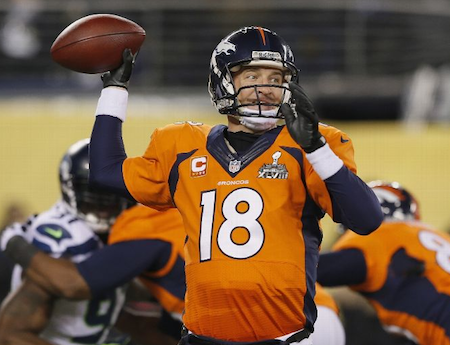Spots Aren’t Enough As Super Bowl Goes Social

During the Super Bowl, texting, social media, and searching scored bigger among multitasking viewers than the Denver Broncos.
According to research by media buying agency MediaVest, of the viewers who watched the Seattle Seahawks dominate the Broncos, 41% used their smart phone while viewing, 31% used their personal computer or laptop, and 20% used their tablets.
That means that spending $4 million for Super Bowl commercials isn’t a sure bet for marketers, unless they have a solid multiplatform strategy, the agency said. On the other hand, new media platforms have created opportunities for brands that don’t have Super Bowl budgets.
Viewers were using social media during the Super Bowl. “For marketers, social media is of equal or greater importance than TV for many viewers,” MediaVest said.
Of TV viewers who multitasked during the game, 39% texted with someone and 23% talked to someone on their smart phone; 31% read or sought information on Facebook and 24% shared or posted something on Facebook; 20% read or sought information on Twitter and 15% posted or shared content on Twitter; 15% posted or visited Instagram and 12% talked to someone using Facetime, Skype or other webcam technology.
In addition to social behavior, 35% of multitaskers visited one or more websites, 29% searched for information or other Internet content, and 18% watched video clips or other video content.
Many people tuned into the Super Bowl looking forward to the ads, and those ads generated a great deal of digital activity. Of the people who engaged in social media for ad and brand-related content, 55% read or sought information on Twitter about the ad or brand-related content, 53% posted on Twitter about ads and brands, 44% shared or posted something on Facebook about ads and brands, 44% texted with someone about ads and brands, 43% talked to someone on their smart phone about ads and brands, and 39% read or sought information on Facebook about ads and brands.
Among people who said they used Facebook to gather information or follow the game, 37% said they were engaged all or most of the time, as did 51% of Twitter users. A similar share of people who used Facebook and Twitter to share or post about the game said they were engaged all or most of the time.
How did the lopsided score affect how much multitasking went on? And would viewers have sought out more content from advertisers if the game had been closer?
“A closer game could mean viewers are more engaged with the game and less multitasking. It depends on the type of multitasking we're talking about; social around the game or non-game-related multitasking,” said David Shiffman, executive VP and research director at MediaVest.
“Based on other programming/content, likely a closer game would have meant higher engagement in social and digital about game-related activity and less non-game related multitasking," Shiffman said. “As for social media engagement around advertising content, it is really independent of the game itself. Strong, compelling advertising is going to be key to driving brand-related engagement beyond the TV.”
For its survey, MediaVest had 1,085 online respondents, age 13 to 54, on its panel.
(Photo Credit: Kevin C. Cox/Getty Images)
Broadcasting & Cable Newsletter
The smarter way to stay on top of broadcasting and cable industry. Sign up below



